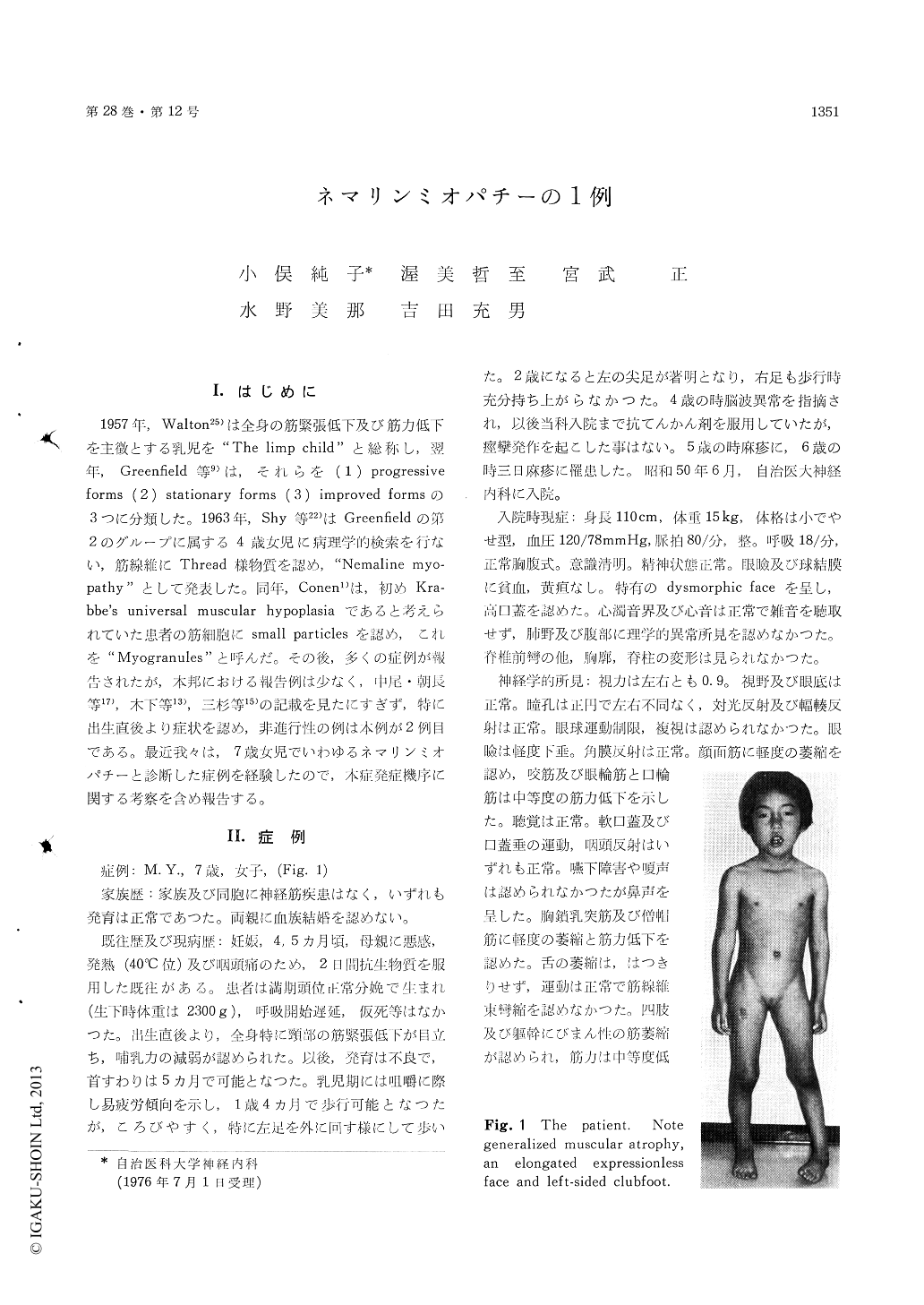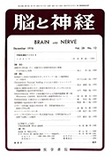Japanese
English
- 有料閲覧
- Abstract 文献概要
- 1ページ目 Look Inside
I.はじめに
1957年,Walton25)は企身の筋緊張低下及び筋力低下を主徴とする乳児を"The limp child"と総称し,翌年,Greenfield等9)は,それらを(1) progressiveforms (2) stationary forms (3) improved formsの3つに分類した。1963年,Shy等22)はGreenfieldの第2のグループに属する4歳女児に病理学的検索を行ない,筋線維にThread様物質を認め,"Nemaline myo—pathy"として発表した。同年,Conen1)は,初めKra—bbe's universal muscular hypoplasiaであると考えられていた患者の筋細胞にsmall particlesを認め,これを"Myogranules"と呼んだ。その後,多くの症例が報告されたが,本邦における報告例は少なく,中尾・朝長等17),木下等13),三杉等15)の記載を見たにすぎず,特に出生直後より症状を認め,非進行性の例は本例が2例目である。最近我々は,7歳女児でいわゆるネマリンミオパチーと診断した症例を経験したので,本症発症機序に関する考察を含め報告する。
A 7 year-old girl with "Nemaline Myopathy" was reported. The patient had hypotonia and motor retardation since birth. There was no family history of neuromuscular diseases. The maternal pregnancy course was uneventful except that she had taken antibiotics for two days in the 4th or 5th month of pregnancy because of fever, chill and sore throat.
She showed a slender built, elongated expression-less appearance with ptotic eyelids, a typical myo-pathic face. Also, high arched palate, lumbar lordosis, bilateral foot drop and left sided club foot deformity were noted. The clinical course was non-progressive.
Neurological examination revealed generalized muscular atrophy and weakness with facial in-volvement. She showed waddling gait and the speech was of nasal quality. The deep tendon re-flexes were symmetrically decreased in the knee jerks and not elicited in the others. Also, hyper-extensibility of joints was noted. The intelligence was normal.
Values of serum enzymes were within normal limits, and other blood chemistries were all normal. Urinary excretion of creatine was increased. The leukocyte chromosome analysis revealed a normal female pattern. Bone age was approximately one year behind the chronological age. The EEG showed 21/2-4 per second waves in the occipital region. The electromyography demonstrated many low amplitude motor unit potentials of short duration and no giant spikes, fibrillations were found. The motor nerve conduction velocities were normal.
Biopsy of the quadriceps femoris muscle revealed numerous Nemaline bodies with changes of type I fiber grouped atrophy. In the electron microscopic studies, rods were located mainly around the nuclei, beneath the sarcolemma near thickened Z bands and appeared to have myofilaments protruding fromtheir ends. At higher magnifications, the rod bodies were seen to possess a crystal lattice appearance, with both transverse and axial striae. In the longitudinal sections, the transverse striae had a periodicity of 140-170 angströms and the axial striae had a periodicity of 100 angströms. In the cross sections, the regular tetragonal filamentous pattern had a periodicity of 90-100 angströms.
Pathogenesis of the disease was discussed fromthe clinical and histological standpoints of view in our patient and the cases reported in the literature. The authors infer that although the "Nemaline body" is morphologically characteristic of this entity, however, it may well be an expression of generalized abnormalities rather than the primary lesion.

Copyright © 1976, Igaku-Shoin Ltd. All rights reserved.


